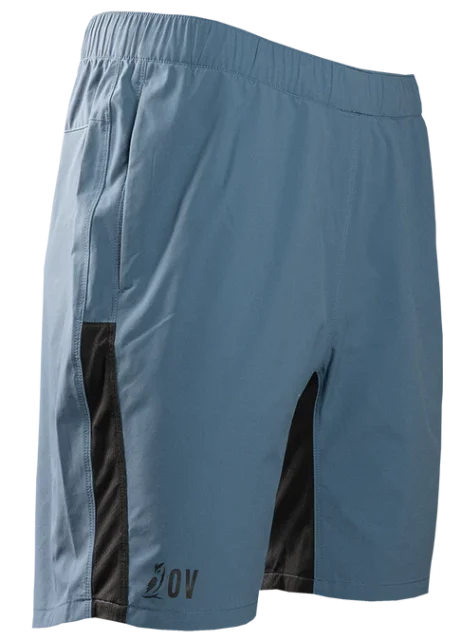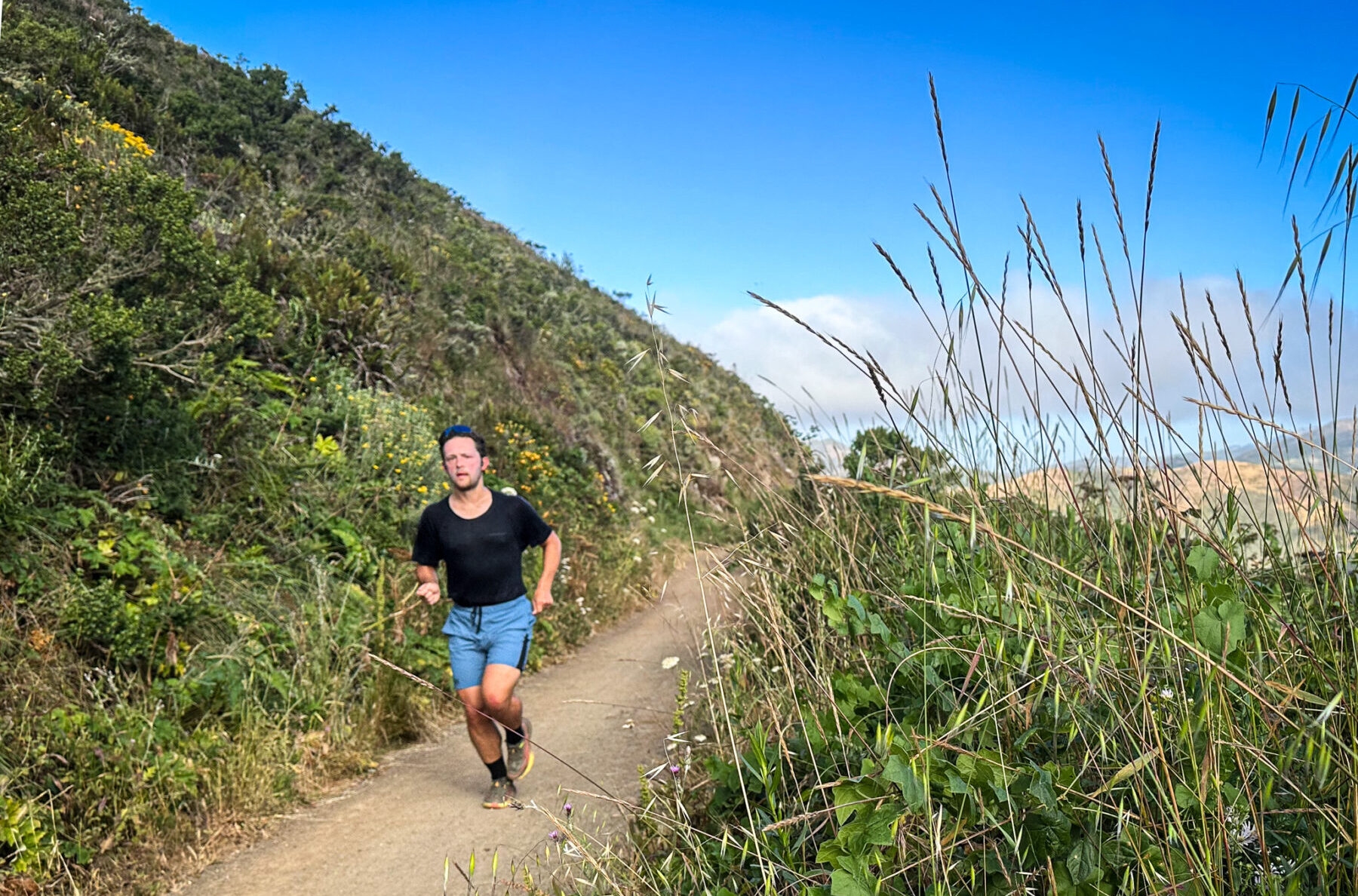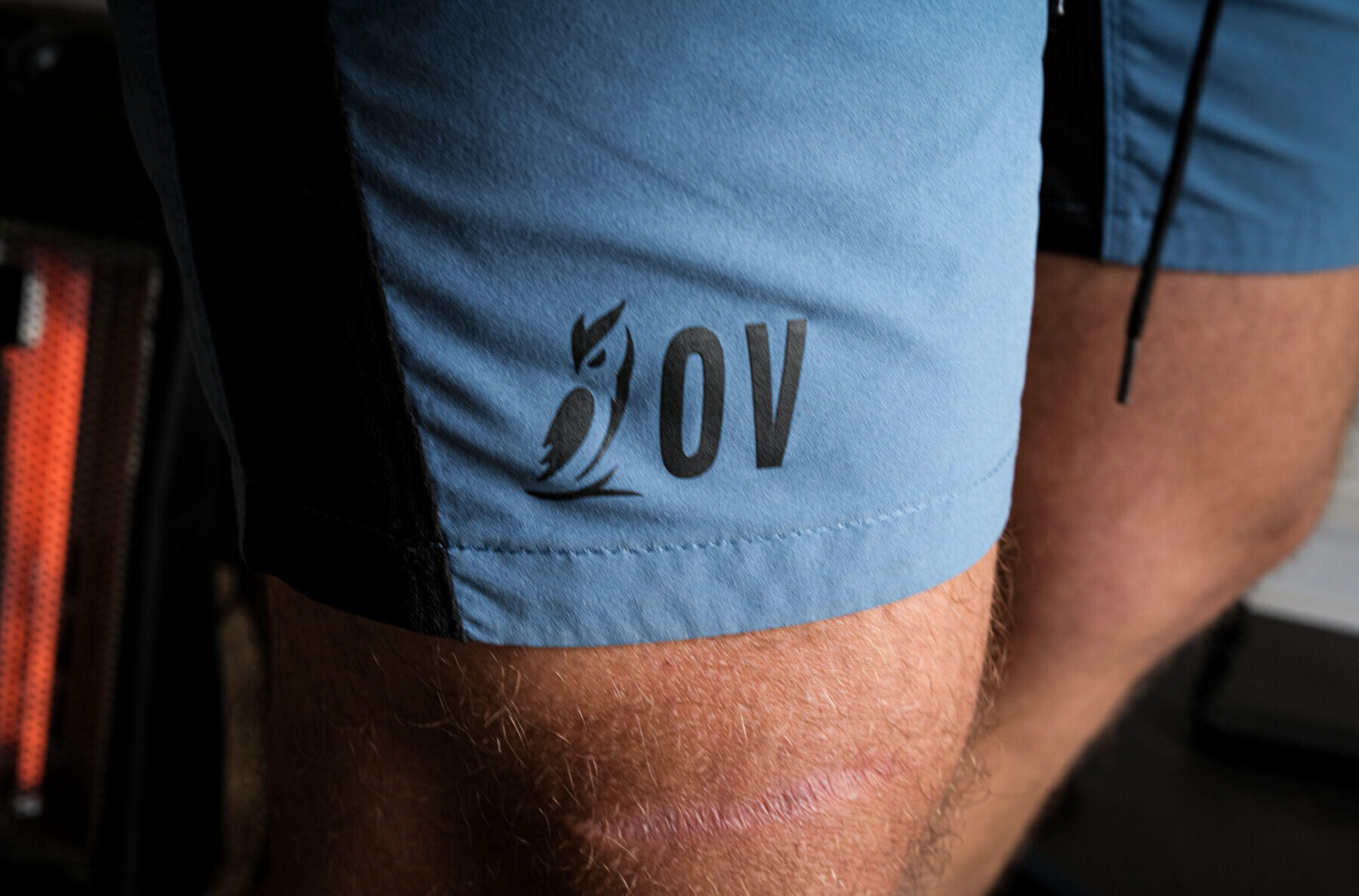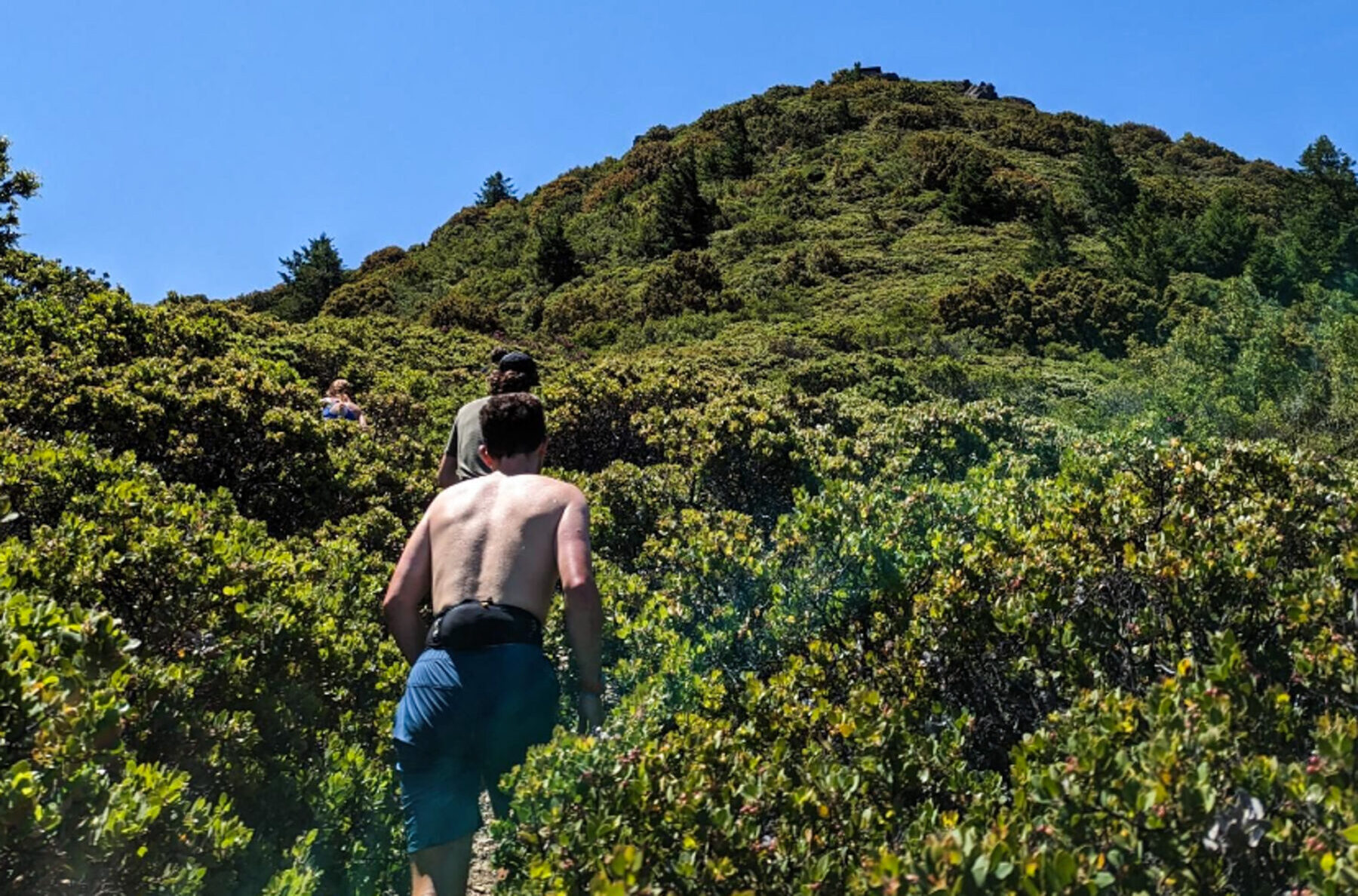Outdoor Vitals Men’s Skyline Trail Shorts
Fabric: (Main) 4 way stretch woven polyester (Second) jersey knit mesh (Lining) jersey knit mesh
Inseam: 8”
Size Tested: Men’s Small
Test Duration: 120 miles (so far)
Reviewer: 5’9”, 150 lbs / 175 cm, 68 kg
Stated Weight: 153 g (Men’s Medium w/ liner)
Blister Measured Weight: 144 g
MSRP: $71.97

Intro

Fit & Features
At $71.97, the Skyline Shorts are still pricey by most standards. I’d argue (and will here) that the versatility and comfort they offer help justify that number, in part via their reliability — having a pair of shorts you can blindly throw on for practically any occasion is a luxury. I think this broad functionality has a lot to do with the fact that they’re not designed strictly for running, per se. Most running shorts tend to suffer from a lack of utility, offering little in the way of storage and/or protection and often being made with wispy materials that may breathe well but can deteriorate quickly.
Because Outdoor Vitals positions their Skyline Shorts primarily for backpacking and fastpacking, they escape some of these pitfalls. For one, their 8-inch inseam, far outside the range that most running shorts come in, grants more protection without inhibiting the mobility and breathability provided by the 4-way-stretch woven polyester they’re made from and the side mesh panels that run down the outside of each leg. There’s also a full crotch gusset made from jersey knit mesh that, at least anecdotally, ventilates that area well while also promoting flexibility (I’m unsure of when I’ll next need to sink into a full squat while out on a run, but doing so is on the table if I’m wearing Skyline Shorts).
I hear folks eulogize all the time about how running with friends is a way to bypass a lot of the social apprehension that can guard vulnerability. I’ve experienced some of this myself, connecting with people out on the trail in a much deeper sense than I would if I met them in passing. Most of the time though, chatter in my social sphere centers on more prosaic topics, like food, beer, and gear. Short liners are something we’ve been kicking around recently after agreeing that it’s often a good pair of shorts’ undoing. The Patagonia Strider Pro Shorts are, in my opinion, widely held as a benchmark in their category, commanding a similar level as respect as, say, a trail shoe like the Hoka Speedgoat; both are frequently used as aspirational examples for other shorts and shoes to model themselves after, respectively. However, those shorts’ thin built-in liner has always been a hang-up for me. I find it too restricting to warrant keeping, so I cut it out and wear a pair of briefs instead. This system works, but it adds to the shorts’ cost and feels more like a workaround than an augmentation.


While I’ve so far been pretty uncritical of the Skyline Shorts, some of the aspects that elevate them over other popular running shorts do bring their own set of disadvantages. Despite including several mesh panels aimed at improving breathability, the woven polyester material that makes up the bulk of the Skyline Shorts does not ventilate all that well. Once saturated with sweat, it also takes a very long time to dry. Because I primarily wore the shorts in warm settings, this flaw performed more like a feature by keeping me cool; however, in most other scenarios I think I’d be less welcoming. Even when completely dry, the shorts are still noticeably heavier than what’s typically seen in the trail short category. For context, here’s how the Skyline Shorts’ weight compares to other similar models. All stated weights are based on a Men’s Medium.
81 g / 2.8 oz — Raab Talus Ultra Shorts
93 g / 3.3 oz — Salomon Sense Aero 5″ Shorts
96 g / 3.4 oz — Salomon Cross 5” Shorts
105 g / 3.7 oz — Patagonia Strider Pro Running Shorts – 5″
106 g / 3.7 oz — Janji 5″ AFO Middle Shorts
136 g / 4.8 oz — Path Projects Graves PX – 5” Shorts
153 g / 5.4 oz — Outdoor Vitals Skyline Trail Shorts
Another misstep in the Skyline Trail Shorts’ design is pocket placement. I’ve always thought the most useful place to locate storage on a pair of running shorts is in the rear, just below the waistline. This area provides a stable canvas of space that’s out of the way yet easy to access. The North Face’s Summit Series Pacesetter Run Brief Shorts serve as an example of this style done well; their main rear zipper pocket is wide enough to accommodate a smartphone and is neighbored by a stretch pocket for nutrition, etc. on either side.
The Skyline Trail Shorts’ only forms of storage are 2 front hip pockets in the style of what you’d expect to find on a pair of casual basketball shorts (think the baggy And-1 variety from back in the day). Carrying anything in this area is incompatible with running, and the more I considered it, the more I imagine it’ll likely feel obstructive while backpacking / fastpacking too. Both pockets also lack zippers, so there’s nothing to prevent items you’ve stashed in them from spilling out. It presents as a confusing choice I’d be eager to hear Outdoor Vitals defend.
Poor pockets on a pair of trail shorts likely won’t be a new issue for you if you’ve been running long enough and there are plenty of ways to supplement poor storage with additional gear. I’ve been partnering the Skyline Trail Shorts with a Naked Running Band (to learn more about Naked, check out our Off The Couch episode with Lindsay Dakota) to create a modular-type system that supports longer runs when I need to carry nutrition, hydration, etc. In the long term, I think this strategy could also help extend the Skyline Trail Shorts’ lifespan, which have already proven to be impressively durable so far. I have well over 100 miles in my pair and there are still no evident signs of wear / stretch. If that changes down the line, I’ll be sure to chime back in with updates.
Bottom Line
Happening upon a pair of trail shorts that fit well and are activity agnostic (i.e., they work just as well worn during a short shakeout as they do on a multi-day fastpacking trip) feels like finding a blank check in your name on the sidewalk. While I don’t think Outdoor Vitals’ Skyline Trail Shorts will necessarily be that for most people, they still tick a lot of boxes when it comes to comfort and functionality, especially when paired with additional forms of storage.
